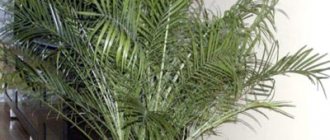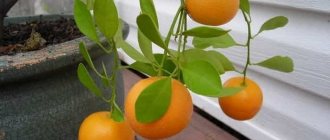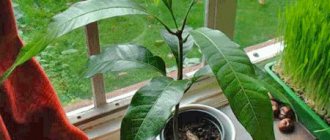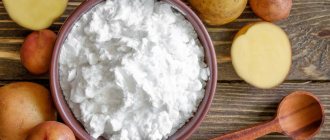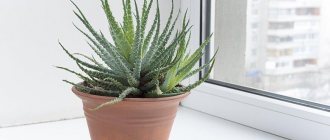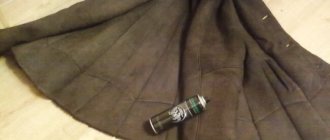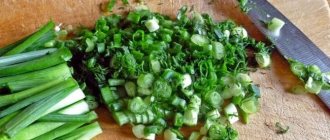Groups Growing exotic plants Vegetables
Enki April 17, 2020 at 3:08 pm 236
Author: Enki
Log in to the site and you can join the group.
Good day!
I’ll tell you about a plant that is still considered exotic, but has the right to occupy a piece of our garden. This is luffa or loofah, I’ve seen it called both.
This plant is interesting for its fruits, which are useful in cooking and farming. For the middle zone and Siberia, most likely, only a greenhouse option with early planting is suitable, but for the south of Russia it is easy to grow in open ground.
Luffa is a herbaceous vine, somewhat similar in leaves and stem to cucumbers, only the fruits are very fibrous when ripe, due to which it has interesting properties. While the fruits are green, they can be eaten. And can be used as eco-scrubbers. I actively use them and now I’ll tell you how to make them.
So, if you need a soft washcloth for the body, then do not let the loofah ripen completely - pick it earlier and dry it under a canopy; the riper it is, the stiffer the fiber. If you need tougher ones, leave the fruits on the bush until they are completely ripe and yellow.
Ripe luffa looks like this:
To make a washcloth out of it, just soak it in boiling water and knead it. Like this:
The dry skin itself will begin to separate easily, exposing the fibers.
I peel it off completely, cut off the ends of the fruit and pour out the seeds. They will also be useful for sowing new loofahs.
We already have a washcloth preparation. I wash it well in soapy water and dry it.
Seed selection
Loofahs are grown from seeds, so that's all you need to get started. It is a plant closely related to the pumpkin, Luffa aegyptiaca (commonly known as angular luffa, ribbed luffa, Chinese okra or vegetable gourd) and L. acutangular, also sometimes referred to as L. cyclindrica (commonly known as smooth luffa, Egyptian luffa or pumpkin gourd), both are sold as luffa.
When you buy a packet of luffa seeds, it may not indicate which seeds you are getting. The two types are pretty much interchangeable, so you don't have to worry about the details. Both are tall - at least 2-3 meters in length - annual vines with beautiful yellow flowers. The appearance of the fruit depends a little on the variety you plant: slanted luffa fruits have longitudinal ridges separated by deep grooves; The smooth luffa fruits have only shallow folds along the length of the fruit. Depending on the variety, the fruit can reach from 30 to 90 centimeters in length. If you have a choice, a smooth luffa is a better choice for sponges.
Beneficial features
The loofah plant is a genus of herbaceous vines in the Cucurbitaceae family.
Naturally grows in the regions of Asia and Africa. Is it possible to grow this plant here in Russia? Of course you can, it grows very well in the southern regions by sowing seeds in the ground. In our Volga-Vyatka region and central Russia, loofah is grown using seedlings. But more on that later. Loofah, an annual beautiful and branched plant - liana. The shoots reach a length of 5 meters. The fruits grow up to 70 cm long. It can decorate and shade a gazebo, form a beautiful hedge, and you will get washcloths from its fruits and wonderful cosmetics from its stems and leaves. Young, unripe fruits are eaten, and folk medicinal potions are prepared from them.
Eating unripe fruits helps strengthen the immune system and helps fight flatulence and bloating, treat chest cough, and increase lactation in nursing mothers.
- We buy loofah seeds, there are a great variety of them, the “Cylindrical” variety is recommended, it is well suited for making washcloths.
- The technology for growing loofah is similar to growing cucumbers. It does not like replanting, is moisture-loving, and does not bear fruit well when planted thickly.
- We sow the seeds in separate peat cups from early March to mid-April; planting dates depend on your climate. In the Kirov region, we plant loofah seeds in early April.
- Make sure that the soil is always moist and the temperature before emergence is high, 25-30 degrees. When shoots appear, move the cups to a cooler place.
- Seedlings that have reached 40 days begin to harden. When the weather is warm and the nights are warm, they are planted in the ground on the south side.
- Loofah is very sensitive to soil; it loves and bears fruit well in loose, light and nutritious soil. Prepare the area for it in the fall, add humus and ash.
- We prepare a hole, pour humus into it and mix it with soil, transplant the seedlings carefully, without destroying the lump of earth where the roots are located. The root system of the loofah is superficial; it is recommended to immediately place a support for the plants, and as it grows, stretch the nets or guide the plant along a gazebo or a special arch.
- The distance between plants should be at least 1.5 meters; it grows very much, and when planted thickly, it does not produce a good harvest. When reaching 5 meters, the middle branch must be pinched, this will increase the yield.
- We feed the plant 1-2 times a month, add 1 liter of mullein and 0.5 liter of ash to a bucket of water.
- We don’t let the soil dry out, but we also don’t allow it to become waterlogged.
This is how you can grow this wonderful and beautiful loofah plant.
Moisturizing mask
This wonderful mask is suitable for all our skin, for the face and hands, heels and décolleté. Grind the loofah leaves and add a little honey, a few drops of olive oil and apply to the skin for 10 minutes. Rinse off with warm water and apply nourishing cream.
Lotion
Squeeze the juice from the young stems and leaves of the loofah and wipe your face and hands with it. It acts as a mild bleaching agent.
Use loofah sponges and sponges, they are good for removing makeup. Apply cleanser to a dampened sponge and wipe your face in a circular motion, then rinse with warm water.
This cleansing improves blood circulation and removes old cells, which helps even out skin color. When caring for your body skin, it is highly recommended to use a loofah sponge.
Loofah is used in making handmade soap; this plant is very popular among soap makers. Soap made from loofah has an exfoliating effect, which is very beneficial for our skin.
Today we met an amazing and useful loofah plant, try planting it in your garden and grow your own loofahs.
The site “I am a villager” wishes you good health and good mood!
Loofah seeds contain a huge amount of edible oil and protein. Luffa is included in many cosmetic products.
There are also vegetable and technical varieties of this plant. They differ in the quality of the oil obtained and in the scope of its use. Technical varieties are used to prepare loofah, and the oil obtained from the seeds is included in various face masks and other cosmetics. Food grades are used in cooking.
Not only the fruits and seeds of the plant, but also their green part have beneficial properties. For example, the juice from luffa stems in Japan is widely used to create lipstick or used as a lotion to cleanse the skin.
Before World War II, luffa (loofah) was used for industrial production. Due to its light and porous texture, it was used in various filters and diesel parts.
Also, due to good sound insulation and high strength, the fruits of the plant were used as an inner layer in the manufacture of steel helmets and automotive equipment for the US Army.
Many people are interested in such a plant as luffa. How to make a washcloth? To make a bath accessory, you first need to grow high-quality fruits.
Luffa leaves absorb a huge amount of moisture, so you need to carefully ensure that the soil does not dry out and the plant has constant access to the necessary nutrients. Water for irrigation must be warm, otherwise the luffa may die. Experienced gardeners also recommend spraying the vine itself once every two weeks or using a sprinkler.
As soon as the first mature ovaries are formed, you need to select 3-5 of the strongest ones, the rest need to be plucked out. In order for nutrients to reach the fruit, it is better to remove the side branches, the same applies to excess green mass.
Luffa, like any other plant, requires a large amount of oxygen, so the soil needs to be loosened three times a season, given the shallow root system, this procedure must be carried out very carefully.
Pollination - initially only female flowers are formed, male flowers begin to appear only after 10-12 days. Given the nature of the plant, it is almost impossible to pollinate it with the help of insects; the most reliable way is to use the manual method. It will be possible to find out whether the work was carried out successfully or not in a few days; the pollinated ovaries increase significantly in size.
Planting luffa seeds
Loofah seeds can take up to 150 or even 200 warm days to germinate, grow into a vine, flower and produce a sponge ready for harvest, so most gardeners in colder climates start luffa seed seedlings indoors in tall pots (12-15 cm.) approximately 4-6 weeks before the last possible spring frost. Gardeners in warmer zones can plant seeds directly into the soil or into an outdoor container if the weather is warm in late spring. For good germination, the temperature of the soil, not the air, must be at least 21 degrees. Don't rush, the seeds are more likely to rot than to germinate.
What is luffa
Luffa is an annual plant from the genus of herbaceous vines. It belongs to the pumpkin family, although in appearance it is very similar to a huge cucumber!
Among the people, luffa received a funny nickname - mad cucumber. The size of the fruit can reach up to 50-70 cm, weight from two to three kilograms, and the vine itself has a length of 3 to 6 meters. When dried, the weight of the fruit decreases significantly.
Luffa prefers tropical and subtropical climates, but it also grows in warm regions. Many amateur summer residents successfully cultivate and grow luffa. The plant is whimsical and has its own “requests”. With proper care, attention and care, as well as good climatic conditions on fertile soil, you can get more than three fruits from one bush!
Tips for growing luffa
- Germination can take up to 14 days, so patience is required.
- Before planting, soak the seeds overnight in a glass of water to speed up germination.
- Plant 3 or 4 seeds a few centimeters apart in a group, pushing them 1 centimeter into the soil.
- Create spatial groups at a distance of 15 to 20 centimeters
- Once the plants reach 30 cm in height, thin out the smaller seedlings from ground level, leaving only the strongest to grow, one or two per group.
Boarding time
Luffa is considered a heat-loving plant, and therefore is mainly grown by seedlings in a greenhouse. If we are talking about hot regions where summer lasts quite a long time, then you can resort to growing in open ground. The growing season of such a plant is quite long, but it depends on the specific variety. Already in early March, the seeds can be prepared for planting by pre-warming them, soaking them and keeping them in damp gauze at a temperature of 25 to 30°C. Next, the sprouts are sent to cups with soil and placed in a warm place under glass. After the first shoots appear, the coating is removed, and the sprouts can be transferred to containers in a lighted place. They need to be watered as the soil dries out; about 10 days before planting in open ground, they need to be fed with a complex fertilizer containing organic and mineral substances.
Luffa Vine Care
Keep weeds under control by pulling them or covering the area with organic mulch.
Water the plants deeply if there is no rain for several days or if the leaves wilt.
Once the flowers begin to appear, you may notice that some of them have tiny green pumpkins attached to them and some do not. This is normal: pumpkins have male and female flowers. Female plants have tiny pumpkins that will develop when the flower is pollinated, while male plants exist only to produce pollen and die.
If you have flowers with tiny pumpkins, but the pumpkins simply shrivel after the flower closes, you may not have enough bees or wild pollinators tending your vine. In this case, you can play bee by picking a male flower (without the tiny pumpkin underneath) that has just opened, and rubbing its dusty pollen center against the sticky nub inside the center of any female flowers that opened that day.
Luffa - what is it - botanical description of the plant
Egyptian luffa is a herbaceous plant from the Cucurbitaceae family.
Occurred in West and North India, as well as in western Africa.
In total, there are now about 50 species of this “mad cucumber”.
But only 2 of its varieties began to be actively cultivated and used in the future.
Read also: Multi-row fern: care at home
Luffa is a vine whose stems reach at least 4-5 m in length.
A plant with palmate-five-lobed leaves averaging 20 cm long and has white or yellowish large flowers.
The fruits look like large cucumbers, usually about 50 cm long, with fibers containing seeds inside.
The green corrugated fruit dries out completely after flowering and ripening.
Luffa seeds are ovoid, their length is approximately 1.2 cm.
Collection of luffa sponges
If loofah is your goal, then leave the pumpkins on the vine all season until the green skin turns yellow; after that they turn brown and begin to dry out. As pumpkins ripen, they become thin, the skin becomes dry and separated from the insides, and they may even rattle when you shake them. The longer mature luffa can remain on the vine, the more fibers will develop and the stiffer they will be. Pumpkins picked too early will have thin, brittle fibers that will simply break and crumble when you try to peel and use them.
When the luffa squash is dry and its skin cracks when pressed, you can immediately pick and peel it or store it in a dry place to use later.
If frost threatens, select the ripest pumpkins and peel them immediately. Crack and remove as much skin as possible and shake out the seeds. (If the seeds are plump and the pumpkin is very dry and ripe, save some for planting next spring.)
Soaking the partially peeled fruit overnight will help loosen stubborn patches of skin. Rinse the juice from the sponge under running water or in a bucket of water. Allow to dry completely before storing.
While we may think “loofah,” people in much of the world think “delicious” when it comes to luffa. No, I suggest you try not the luffa sponge, but the buds, flowers and small unripe pumpkins.
Luffa flowers are very similar to pumpkin flowers. As for young luffa fruits, they are a little firmer than zucchini, but they taste almost the same and absorb the flavors of everything equally well when you cook them. Young luffas are traditionally breaded and deep-fried. Can be added to curries and stews and made into chutney. The flowers can be stuffed and cooked like squash blossoms.
Varieties of luffa
There are more than 50 species of luffa, but only two types of plants have become widespread. Other types of plants produce too small fruits and require quite a lot of care. Therefore, it makes no sense to grow them
The young fruits of the ribbed luffa are used for cooking. It is stewed, boiled, and added to other dishes. It can be eaten raw and even canned. The pulp of young shoots is juicy and sweetish (very similar to the taste of cucumber).
But when the time comes for the fruit to ripen, the pulp turns into dry fiber. When the fruit dries completely, a sponge of woven dry fibers forms inside. It is taken from the dried fruit and used to make washcloths, rugs, mattress filling, and even to make hats. Filters for insulation are made from pressed luffa sponge.
- Luffa cylindrical (or Egyptian)
This species produces smooth, cylindrical or club-shaped fruits. This plant is often called loofah luffa. However, cylindrical luffa can be used not only for making washcloths.
The scope of its application is the same as that of the sharp-ribbed relatives. But, most often, natural washcloths are made from it. This species has tender and juicy pulp, delicate and thin skin that is easy to peel from dry fruit.
Health Benefits of Eating Vegetable Luffa
In many Asian countries, young loofah squash are revered for more than just their taste and nutrition. In fact, they are a traditional remedy for a wide range of health problems, including eye and heart health, preventing blood sugar imbalances, and reducing muscle and joint discomfort, to name a few. Several scientific studies show that young luffas contain some unique antioxidants, anti-cancer compounds and anti-inflammatory compounds, which may explain their long history as a traditional remedy.
Plant and grow luffa for food in the same way as if your primary goal were sponges, except you don't have to rush to plant in the spring. Why? You can expect to have your first tender pumpkins in just 45-60 days. But why choose? Many gardeners allow the first few fruits on each vine to remain on the vine to grow into squashes, and cut all subsequent pumpkins when they reach the ideal size for eating, which is a pretty good case.
Collecting luffa for eating
Using a sharp knife or pruning shears, cut the stem between the vine and the young luffa squash. Harvest while they are still tender (you should be able to easily pierce the skin with your fingernail). For most species, this occurs when the vegetables are about 15 centimeters or less in length. Use them in any summer salad recipe.
- Loofah loofah is a popular natural remedy that is made from the ripened luffa fruit.
- Also known as sponge gourd, sponge gourd or luffa, this plant can be grown from seed.
- You can also eat luffa, but do not eat fully ripened and dried luffa. You clean the one that is ripe and use it as a “sponge” for cleaning the skin and a washcloth.
- Be sure to regularly wash your loofah sponge in boiling water, dry it in a dry place, and disinfect it regularly to avoid contamination.
- Replace washcloths every three to four weeks. You can burn or compost them.
Dishwashing sponge
If you need washcloths for washing dishes, I just cut them into pieces. For such washcloths, I choose the hardest, well-ripened luffa, like this:
They lather soap and detergents well, and clean no worse than a foam sponge. Then it is enough to rinse it well, and when it dries, it takes on its original appearance. It just turns out to be much more environmentally friendly, since by throwing away a used sponge, we pollute the environment, and a loofah sponge will completely rot.
